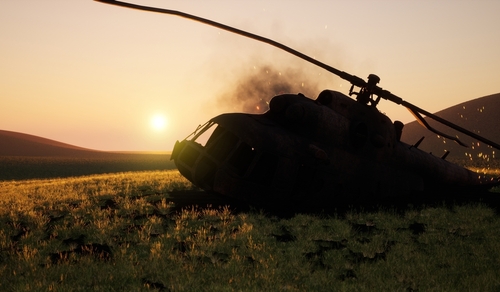A catastrophic midair collision between a Black Hawk helicopter and an American Airlines passenger plane over Washington, D.C., has left 67 people dead, marking one of the deadliest U.S. air crashes in nearly 24 years.
Midair Collision Details
At approximately 9 p.m., a Bombardier CRJ-701, American Eagle Flight No. 5342, collided with a Sikorsky H-60 Black Hawk helicopter. The crash occurred over the Potomac River near Ronald Reagan National Airport. The airliner, approaching from Wichita, Kansas, was instructed to land on a shorter runway before the incident. All 67 passengers, including figure skaters and their coaches, perished in the tragedy.
Cleanup continues on the Potomac River days after a passenger plane and an Army Black Hawk helicopter collided in mid-air, leaving 67 people dead. https://t.co/LhKEJTd8sv
— FOX 5 DC (@fox5dc) February 4, 2025
Wreckage from both aircraft was located in the Potomac River. Recovery efforts, supported by the Naval Sea Systems Command and challenging conditions, transitioned from search and rescue to recovery due to the lack of expected survivors. This accident could become the deadliest U.S. air crash in 24 years, with 28 bodies recovered thus far.
Immediate Aftermath and Investigation
The NTSB spearheads the investigation alongside other agencies due to the crash’s proximity to government buildings. They have identified the helicopter’s altitude breach as pivotal; the Black Hawk flew at 300 feet, surpassing the 200-foot limit for the area. Investigations aim to determine the final moments before the collision and provide answers to the bereaved families.
Families of the victims of American Airlines Flight 5342 visited the crash site Sunday, Feb. 2, where the regional jet and an Army UH-60 Black Hawk helicopter collided midair before plunging into the Potomac River.The accident, which occurred Wednesday, Jan. 29, near Washington… pic.twitter.com/qWP019V6zt
— CGTN America (@cgtnamerica) February 4, 2025
“The NTSB recovered a large portion of what’s left of the UH-60 Black Hawk military chopper after it collided with an American Airlines passenger plane near Washington, DC’s Reagan National Airport last Wednesday, the agency announced Thursday night.”
Lidar technology assists in debris recovery, seeking clarity in this disaster’s sequence. Though the transponder on the commercial jet ceased activity 2,400 feet from the runway, the collision was initially captured on a Kennedy Center Livestream, showing an explosion at 8:47 p.m.
Public and Government Response
Condolences pour in from political leaders, including President Trump, who emphasized an unwavering commitment to uncovering crash causes. “May God Bless their souls. Thank you for the incredible work our first responders are doing. I monitor the situation and will provide more details as they arise.”
A full return to operations at Reagan National Airport is pending. The complex recovery, hindered by harsh weather and water conditions, continues. Investigations will focus on closing procedural gaps and preventing such tragedies.
This catastrophe highlights the paramount importance of aviation safety protocols. As families mourn, regulators and agencies must collaborate to make the skies safer, preventing any repetition of such a tragic event. Public trust in aviation hinges on the integrity of these investigations and the successful implementation of preventive measures.
Sources:
https://www.cbsnews.com/news/crash-reagan-national-airport-washington-dc/

